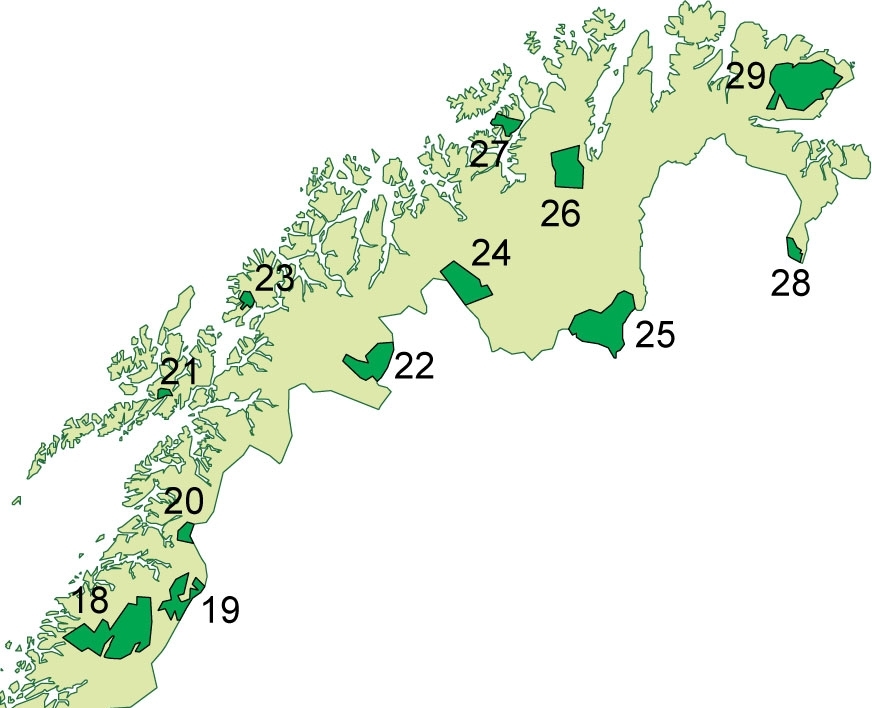Ă…nderdalen National Park on:
[Wikipedia]
[Google]
[Amazon]
Ă…nderdalen National Park () is located on the large island of Senja in  The national park had no
The national park had no
Troms
Troms (; ; ; ) is a Counties of Norway, county in northern Norway. It borders Finnmark county to the northeast and Nordland county in the southwest. Norrbotten Län in Sweden is located to the south and further southeast is a shorter border with ...
county, Norway
Norway, officially the Kingdom of Norway, is a Nordic countries, Nordic country located on the Scandinavian Peninsula in Northern Europe. The remote Arctic island of Jan Mayen and the archipelago of Svalbard also form part of the Kingdom of ...
. The park lies within Senja Municipality
Senja is a municipality in Troms county, Norway. It was established on 1 January 2020 when the municipalities of Berg, Lenvik, Torsken, and Tranøy were merged into one municipality. It is located in the traditional district of Hålogaland. ...
. The park was established by royal decree on 6 February 1970 and it was enlarged in 2004. The national park preserves this Northern Norwegian coastal landscape. The bedrock consists of hard granite rocks and the landscape image gives exciting impressions of the glacial forces that have worked on Senja. The coastal pine forest in Ă…nderdalen has in some areas primeval forest with over 600 years old trees and countless marble pines and lower. Along the river there are many lush hawked birch forests and floodplain forests.
moose
The moose (: 'moose'; used in North America) or elk (: 'elk' or 'elks'; used in Eurasia) (''Alces alces'') is the world's tallest, largest and heaviest extant species of deer and the only species in the genus ''Alces''. It is also the tal ...
before 1940, but it now has a permanent population. It is also an important calving and grazing area for semi-domesticated reindeer
The reindeer or caribou (''Rangifer tarandus'') is a species of deer with circumpolar distribution, native to Arctic, subarctic, tundra, taiga, boreal, and mountainous regions of Northern Europe, Siberia, and North America. It is the only re ...
. The most common smaller animals are red fox
The red fox (''Vulpes vulpes'') is the largest of the true foxes and one of the most widely distributed members of the order Carnivora, being present across the entire Northern Hemisphere including most of North America, Europe and Asia, plus ...
es, stoat
The stoat (''Mustela erminea''), also known as the Eurasian ermine or ermine, is a species of mustelid native to Eurasia and the northern regions of North America. Because of its wide circumpolar distribution, it is listed as Least Concern on th ...
s, hare
Hares and jackrabbits are mammals belonging to the genus ''Lepus''. They are herbivores and live Solitary animal, solitarily or in pairs. They nest in slight depressions called forms, and their young are precociality, able to fend for themselves ...
s, small rodents, and two species of shrew
Shrews ( family Soricidae) are small mole-like mammals classified in the order Eulipotyphla. True shrews are not to be confused with treeshrews, otter shrews, elephant shrews, West Indies shrews, or marsupial shrews, which belong to dif ...
s. Seal
Seal may refer to any of the following:
Common uses
* Pinniped, a diverse group of semi-aquatic marine mammals, many of which are commonly called seals, particularly:
** Earless seal, also called "true seal"
** Fur seal
** Eared seal
* Seal ( ...
s occur at the heads of the fjords and otter
Otters are carnivorous mammals in the subfamily Lutrinae. The 13 extant otter species are all semiaquatic, aquatic, or marine. Lutrinae is a branch of the Mustelidae family, which includes weasels, badgers, mink, and wolverines, among ...
s are often seen along rivers. Trout and char are common, and salmon run right up the river to the lake Ă…ndervatn.
Name
The last element is the finite form of ''dal'' which means "dale" or "valley
A valley is an elongated low area often running between hills or mountains and typically containing a river or stream running from one end to the other. Most valleys are formed by erosion of the land surface by rivers or streams over ...
". The meaning of the first element is unknown. In the valley and the park are similar names such as the river ''Ă…nderelva'' and the lake ''Ă…ndervatnet''.
References
External links
* Map of Ă…nderdalen National Park {{DEFAULTSORT:Aanderdalen National Park National parks of Norway Protected areas established in 1970 Protected areas of Troms 1970 establishments in Norway Senja